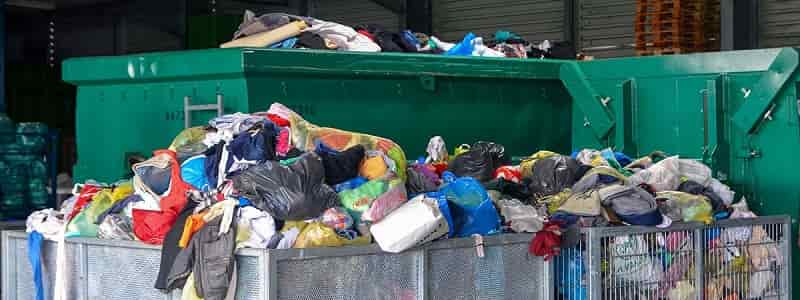Waste textiles – Chemical sorting 23-03-2023 - Arhive
Waste textiles – Chemical sorting
-Emissions from waste textiles could be cut with chemical sorting process
A process that separates polyester from other textiles known as “chemical sorting” could help to cut the huge carbon emissions associated with the clothes industry, researchers have said.
The sector currently accounts for around 10 per cent of global carbon emissions and almost 90 per cent of post-consumer fibre waste is disposed of through incineration or in landfills.
Among these forms of waste, synthetic fibre has become a major threat to the environment and human health because, like other plastics, it is not biodegradable in nature.
Owing to its low cost and durability, polyester is the most widely used synthetic fibre on the planet, accounting for more than half of all fabrics annually produced.
Now, a research team from the Korea Research Institute of Chemical Technology (KRICT) has developed a “chemical sorting” process that separates polyester from waste textiles that are disposed of in a mixed and contaminated form. Waste textiles – Chemical sorting
In the process, a unique chemical compound, which selectively disrupts the chemical interaction between polyester and the dye used for its colour, is used for the separation.
The researchers have also developed a new chemical recycling technology that consumes less energy than conventional methods to convert polyester into valuable monomers which can then be used to create new polymer materials.
Most clothes recycling currently relies on a labour-intensive process to manually sort huge piles of waste textiles into different material types.
This method is unreliable, has low accuracy, and often fails to process homogeneous materials, which can be critical for further recycling. Waste textiles – Chemical sorting
The chemical sorting process uses a non-toxic and biodegradable compound to chemically discriminate polyester from a mixture of waste fabrics. When the compound is applied to textiles. colorants only present in polyester are completely extracted while no significant changes occur in other materials.
As a consequence, clean polyester can be separated from the mixture of coloured fabrics.
The method is applicable to select polyester from an uncoloured fabric mixture as well. When uncoloured fabric comes into contact with the waste colorants extracted from the sorting process, only polyester accepts the colorants while the other materials remain unchanged. Waste textiles – Chemical sorting
The resulting sorted polyester can be used as clean feedstock for chemical recycling because the sorting method eliminates most organic impurities including dyes.
Chemical recycling, which converts polymer waste into the original building blocks, has the potential to achieve circular recycling for waste polyester, the researchers believe.
Team leader, Dr Joungmo Cho, said: “Recently, the garment industry has utilised transparent and clean post-consumer PET bottles to produce recycled polyester clothes.
“However, this method is not sustainable because the material cannot be repeatedly recycled. In contrast, our current technology would not be limited by the complexity of the constituent materials or the initial level of impurity in the waste.
“Whether the targeted materials are derived from petroleum directly or recycled from waste, the technology can repeatedly process most post-consumer textile streams. Thus it will help reduce waste in landfills and substantially achieve a circular economy in the plastic and textile industries.” Waste textiles – Chemical sorting

